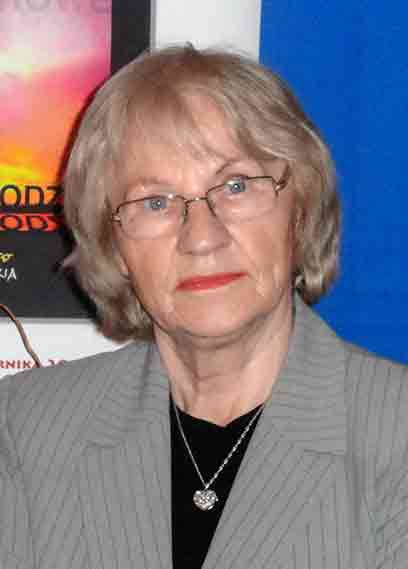One of the officers of the Świętokrzyska Brigade, the commander of its 2nd Company, was captain Wacław Żurowski, pseudonym "Żur", who, after the dissolution of the guard companies, emigrated to the United States and settled in Milwaukee. His fate is an example of the fate of many members of this military formation.
Wacław Żurowski was born on September 14, 1914, in the Świętokrzyskie Region, in the village of Pierzchnica, as the son of Antoni Michalski and Józefa Skrybus. He graduated from the Teachers College (1934) and the Officers School (1934-35). In 1936-39 he was a high school teacher.
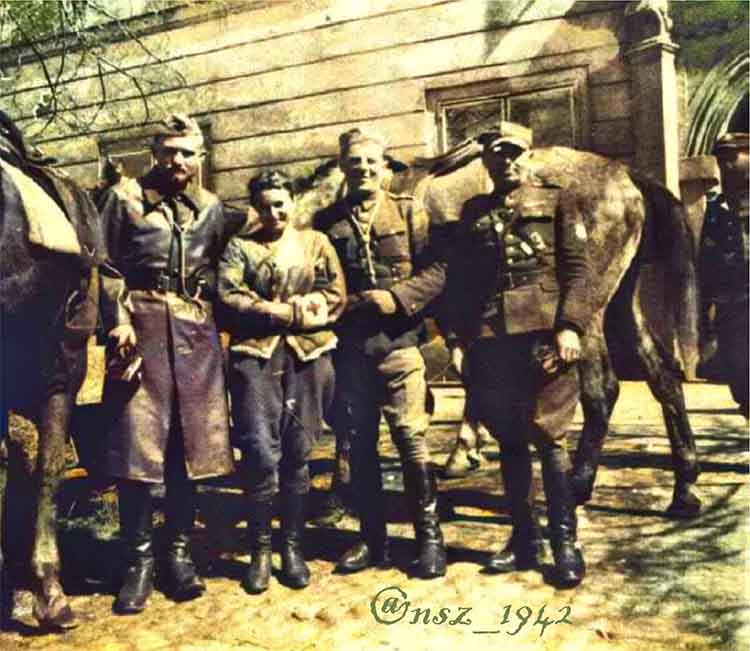
Lieutenant Wacław Żurowski, a.k.a. Michalski, pseudonym "Żur" (second from the right), Czech Republic, May 1945 (Source: Twitter/Narodowe Siły Zbrojne)
In August 1939, he was mobilized to the Polish army. From August 11, 1944, he was the commander of the 2nd company of the Świętokrzyska Brigade, with which he joined General George Patton's 3rd Army. In 1945-47 he served in guard brigades. In 1951, he came to the United States to visit Milwaukee. In the United States, he completed his education at UWM and partook in various civic activities under the name of Wacław Michalski.
He was a lecturer at Marquette University, University of Wisconsin Extension, 1962-1990, and Milwaukee Area Technology College. He knew four languages (Polish, English, German, and Russian) and is the author of numerous articles. He was an active member of Polish organizations, including the Polish American Congress in Milwaukee, the Association of Polish Combatants, and the Wisconsin Historical Society. He has been awarded many honorary awards and diplomas. He has permanently entered the Hall-of-Fame of the Polish community in Wisconsin and throughout the United States.
Beginning of World War II
On September 1, 1939, around 4:00 am, Germany attacked Poland along the entire length of the border. Prior, on August 23, 1939, they signed a pact with the Soviet Union, known in history as the Ribbentrop-Molotov Pact. This pact divided Polish lands between Germany and the Soviet Union. Despite the previously concluded defense alliances with France and Great Britain, none of the allies came to Poland with real help. From the first day, Poland put up a heroic resistance to the invaders. The collapse took place after September 17, when the Soviet Union, having broken the non-aggression pact, attacked Poland from the eastern border. The last battle of the September campaign was the Battle of Kock, fought from 2 to 6 October 1939. This did not mean, however, that the Poles gave up the fight by surrendering.
The inhabitants of both occupied parts of the state were subjected to cruel repressions. Terror and planned destruction of the Polish nation took place in the country. In order to resist it, in September 1939, the underground structures, subordinated to the Polish Government in Exile, began operating. The underground administration and the underground Polish Army were recreated in the occupied country. After leaving the internment camps in Romania and Hungary, numerous regular troops continued to fight in France, and after its defeat, they fought side by side with the British Army and, later, as allies of the anti-Nazi coalition.
The second wing of the Polish army was formed as an underground army in the country. Depending on what political orientation initiated the creation of armed units, they had their own program and areas of operation. During the occupation, they were transformed and formed into larger groups. The largest groups of the underground army in Poland were:
- The Home Army (Armia Krajowa, AK), which was to unite other formations.
- Peasant Battalions (Bataliony Chłopskie, BCh) were the armed arm of the People's Party (Stronnictwo Ludowe, SL) — members of SL and the Union of Rural Youth of the Republic of Poland "Wici", operating in rural areas
- National Armed Forces (Narodowe Siły Zbrojne, NSZ)
and many smaller, local guerrilla organizations. All of them had as their primary goal the liberation of Polish lands from occupation. Another armed formation was the People's Army (Armia Ludowa, AL). It was a communist guerrilla subordinated to the Soviet Army.
80 years of the National Armed Forces
The National Armed Forces (Narodowe Siły Zbrojne, NSZ) was an underground military organization of the national camp operating in the years 1942-1947. They were established on September 20, 1942. At the peak of their activity, they had over 100,000 members. The program of the NSZ was published in the Declaration of the National Armed Forces in February 1943. It contained, among others, the project of post-war Polish borders in the east covering the pre-war areas of the Second Polish Republic, and in the west based on the line of the Odra and Nysa Łużycka rivers. In its social part, it proposed, among other things, strengthening the position of the family, education based on Catholic ethical principles, organizing a national army to defend against totalitarianism, both German and Soviet, and limited land reform.
The NSZ had a decidedly negative attitude towards the communist underground. Seeing no chance of success, they were also opposed to a general anti-German uprising. From the very beginning, there was controversy between the Home Army command and the NSZ superiors over the consolidation of forces. As a result of these disputes, there was a split in the NSZ and only part of the armed forces joined the AK (NSZ-AK), while the other, much larger (around 65,000), ran a separate activity as NSZ-Związek Jaszczurczy (NSZ-ZJ, NZS-Reptilian Alliance).
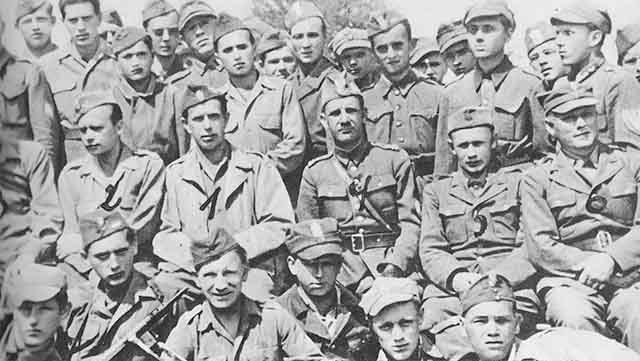
Świętokrzyska Brigade (Source: Wikipedia)
In the face of the Red Army entering Polish territory, the National Armed Forces tried unsuccessfully to concentrate their forces (about 65,000) in order to withdraw to the west.
Świętokrzyska Brigade
The combat formation called the Świętokrzyska Brigade is an armed unit of that part of the National Armed Forces, which did not comply with the order to merge with the Home Army. The Świętokrzyska Brigade was engaged in partisan warfare with Germany, communist guerrillas (People's Army - AL) and Soviet guerrillas, which it considered to be enemies number one, as well as Ukrainian troops collaborating with Germany. It gradually increased its numbers, and in the fall of 1944 it numbered 1,200 partisans.
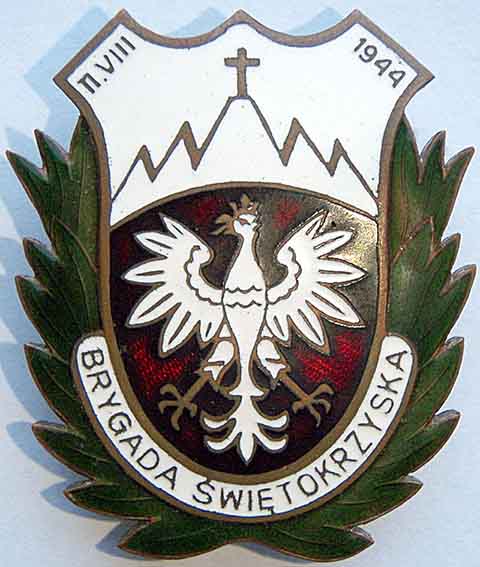
The post-war badge of the Świętokrzyska Brigade (Source: Wikipedia)
The most intense military activity of the Świętokrzyska Brigade took place from mid-August 1944 to mid-August 1945. Then the brigade fought dozens of battles and skirmishes with both the Germans and the armed units of their political opponents. They were of a limited nature. They boiled down to defense against repression and pacifist actions, and the acquisition of weapons and military equipment, because the Brigade was not financed by anyone. Not a single case of ethnic-based killing is known in the history of the Brigade.
In January 1945, in the face of the Soviet offensive, the command of the brigade, fearing its destruction by the Red Army and the NKVD, made an attempt to withdraw to the West. It established contact with the Allied command and the Czech underground, as well as tactical contact with the Germans, which allowed the Brigade to pass through the territories still occupied by the Germans without fighting or losses. During the march, the Brigade retained its identity, did not submit to the German command, and did not allow itself to be disarmed. The brigade established contact with the units of the US 3rd Army of General George Patton. The Americans, after verifying, recognized the Świętokrzyska Brigade as an Allied unit.
Through the Czech Sudetes, it began its march towards the Allies. The German concentration camp in Holiszów (Aussenlager Holleischen) was on their way. There were over 1,000 women prisoners of various nationalities (400 French women, 280 Jewish women, 160 Polish women and smaller groups from the Czech Republic, the Netherlands, Romania, and Belgium. On May 5, 1945, the Poles attacked and liberated the camp. They took 200 SS men and 15 female prison overseers. Long-awaited glory days for the Brigade arrived when Gen. Anders, through his envoy, conveyed to them words of appreciation: "You were and are Polish soldiers, and your deeds will go down in history."
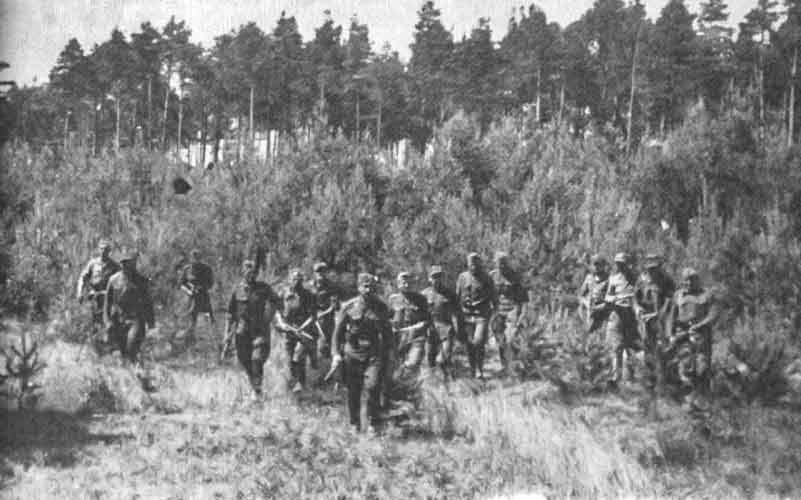
The Świętokrzyska Brigade before the attack on the camp in Holiszów (Source: forum.ioh.pl)
At the end of May, two important celebrations for the Brigade took place: the first one was organized by Polish prisoners from the concentration camp liberated by the Brigade, and the other by the liberated women of other nationalities. From the Polish women, the commander of the Brigade, Colonel Antoni Szacki, received a heart-shaped booklet made of striped uniforms with the names of the liberated prisoners inside. The international ceremony was attended by delegates of military and civilian missions from Belgium, the Netherlands, Hungary, and many other countries.
Guard regiments
In August 1945, the Brigade was transferred to Marsfeld, Germany and converted into sentry companies. Gradually, the companies were dissolved, and the soldiers were transferred to Great Britain, to a training and deployment camp. Most of the soldiers of the Polish Armed Forces in the West emigrated to America — to the United States, Canada, Brazil, Argentina and other countries. A similar fate awaited the members of the Świętokrzyska Brigade.
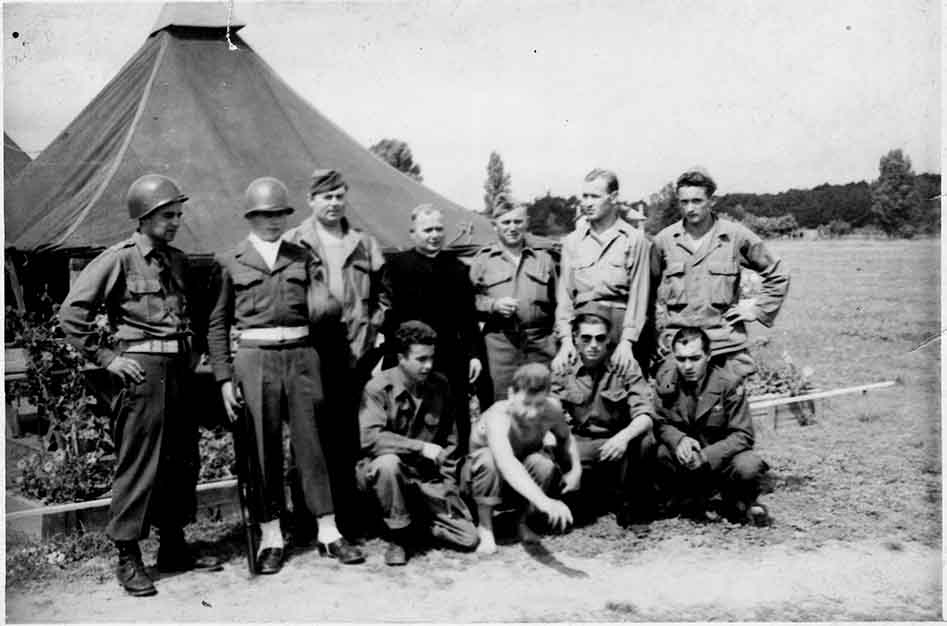
Polish guards at a training ground in France (Source: Wikipedia)
The Świętokrzyska Brigade of the National Armed Forces continues to be a unit that evokes great emotions. For decades, not only the soldiers of the Brigade, but all soldiers of the National Armed Forces were vilified, spat on, and doomed to oblivion. Communist propaganda had no plans to deal with them politely. Likewise, the state apparatus. After the war, for the NSZ members who remained in the country, a period even more difficult than that of the German occupation unfolded. It is estimated that as a result of the actions of the NKVD and the UB (Urząd Bezpieczństwa, Security Service), 90% of the NSZ soldiers who did not flee abroad lost their lives.
Translation from Polish by Andrew Woźniewicz.
The editors of Kuryer Polski are looking for any information about Captain Michalski, a.k.a. Żurowski. Please contact us.



